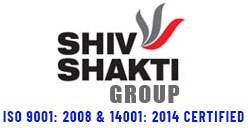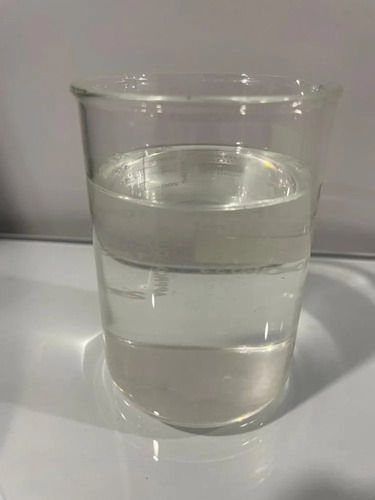Lauryl Alcohol Ethoxylate
160 INR/Liter
Product Details:
- Physical Form Liquid
- Storage Room Temperature
- Shelf Life 12 Months
- Purity 99%
- Grade Industrial Grade
- CAS No 68551-12-2
- Poisonous YES
- Click to View more
X
Lauryl Alcohol Ethoxylate Price And Quantity
- 200 Liter
- 160 INR/Liter
Lauryl Alcohol Ethoxylate Product Specifications
- Liquid
- C12H25(OCH2CH2)nOH
- YES
- Industrial
- Soluble in water
- Liquid
- Room Temperature
- Industrial Grade
- 99%
- 12 Months
- 68551-12-2
Product Description
Lauryl alcohol ethoxylate, also known as lauryl ethoxylate or lauryl ether sulfate, is a chemical compound that belongs to the class of nonionic surfactants. It is commonly used in various industrial and household applications due to its surfactant properties, which help to reduce surface tension and enable the mixing of substances that would otherwise be immiscible, such as oil and water.
Lauryl Alcohol Ethoxylate Properties:
The properties of lauryl alcohol ethoxylate can vary depending on factors such as its ethoxylation level (i.e., the number of ethylene oxide units added to the lauryl alcohol molecule), which affects its molecular structure and characteristics. However, I can provide you with some general properties and characteristics associated with lauryl alcohol ethoxylates:
1. Physical State: Lauryl alcohol ethoxylates are typically found in the form of colorless to pale yellow liquids at room temperature. The specific physical state may vary with the ethoxylation level.
2. Solubility: They are generally soluble in water and in many organic solvents, which makes them versatile for use in both aqueous and non-aqueous formulations.
3. Surface Activity: Lauryl alcohol ethoxylates are surfactants, which means they have the ability to reduce the surface tension of liquids. This property allows them to facilitate the mixing of substances that would not otherwise be miscible, such as oil and water.
4. Foaming: Depending on their ethoxylation level, lauryl alcohol ethoxylates can exhibit foaming properties. They are often used in products like shampoos and detergents to generate stable foam during use.
5. Emulsification: These compounds are effective emulsifiers, aiding in the formation and stabilization of emulsions. They can help mix and stabilize oil-in-water or water-in-oil systems.
6. Temperature Sensitivity: Some lauryl alcohol ethoxylates may be sensitive to temperature changes. They could become cloudy or less soluble in cold water but regain clarity upon warming.
7. Hydrophilic-Lipophilic Balance (HLB): The HLB value of a lauryl alcohol ethoxylate is determined by its ethoxylation level. Different HLB values make them suitable for various applications, from wetting agents to solubilizers.
8. Biodegradability: The biodegradability of lauryl alcohol ethoxylates varies depending on their specific structure and ethoxylation level. Some forms are more readily biodegradable than others, which can impact their environmental impact.
9. pH Sensitivity: The performance of lauryl alcohol ethoxylates can be influenced by the pH of the solution in which they are used. They may be less effective at extreme pH values, such as highly acidic or highly alkaline environments.
10. Compatibility: They are generally compatible with a wide range of other chemicals and ingredients, which makes them valuable in various formulations.
Uses Of Lauryl Alcohol Ethoxylate:
Lauryl alcohol ethoxylate is a versatile surfactant with a wide range of uses in various industries. Its ability to reduce surface tension and promote the mixing of oil and water makes it valuable in many applications. Here are some common uses of lauryl alcohol ethoxylate:
1. Detergents and Cleaners:
a. Household Cleaners: Lauryl alcohol ethoxylate is used in household cleaners, such as all-purpose cleaners, window cleaners, and floor cleaners, to enhance their cleaning efficiency by breaking down dirt and grease.
b. Laundry Detergents: It is a key ingredient in laundry detergents, helping to remove stains and soil from clothing by dispersing and emulsifying oily substances.
c. Dishwashing Detergents: In dishwashing liquids and automatic dishwasher detergents, it aids in the removal of food residues and grease from dishes and cookware.
2. Personal Care Products:
a. Shampoos and Conditioners: Lauryl alcohol ethoxylate is often used in hair care products to create foam and improve the distribution of active ingredients.
b. Body Washes and Shower Gels: It helps in producing lather and emulsifying oils, making body washes and shower gels more effective.
c. Facial Cleansers: In facial cleansers, it can remove makeup and impurities from the skin's surface.
d. Cosmetics: It can be used in cosmetics and skincare products as an emulsifier and stabilizer for creams, lotions, and makeup.
3. Industrial Applications:
a. Textile Industry: Lauryl alcohol ethoxylate is used in textile processing to aid in the dispersion and removal of oils, waxes, and other impurities from textiles.
b. Oil and Gas Industry: It is employed as a demulsifier to separate oil and water in oilfield operations.
c. Metalworking: In metalworking fluids, it helps in lubrication and cooling by emulsifying oils and water.
d. Paints and Coatings: It can be used as a wetting agent and dispersant in paint formulations.
e. Agrochemicals: Lauryl alcohol ethoxylate can be found in agricultural products such as pesticides, herbicides, and fungicides. It aids in the even dispersion of active ingredients and enhances their effectiveness.
4. Food Processing: In the food industry, it may be used as an emulsifying agent in food products like salad dressings and sauces to stabilize oil and water mixtures.
5. Adhesives and Sealants: It can be used in the formulation of adhesives and sealants to improve wetting and adhesion properties.
6. Pharmaceuticals: In some pharmaceutical formulations, lauryl alcohol ethoxylate may be used as an excipient or emulsifying agent.
7. Mining: In the mining industry, it can be used in ore flotation processes to separate valuable minerals from gangue materials.
8. Paint Strippers: It is sometimes included in paint strippers to help break down and remove paint coatings.
9. Automotive and Metal Cleaning: Lauryl alcohol ethoxylate can be found in products designed for automotive cleaning and metal cleaning applications.
FAQ:
1. What is lauryl alcohol ethoxylate?
Ans: Lauryl alcohol ethoxylate is a chemical compound used as a surfactant in various industrial and household applications. It is produced by ethoxylating lauryl alcohol, resulting in a molecule with both hydrophilic and hydrophobic properties.
2. What does lauryl alcohol ethoxylate do?
Ans: Lauryl alcohol ethoxylate reduces surface tension between substances, allowing them to mix more easily. It is used to enhance the cleaning, foaming, and emulsifying properties of various products.
3. What are the common uses of lauryl alcohol ethoxylate?
Ans: Common uses include detergent and cleaner formulations (for household and industrial use), personal care products (shampoos, body washes, etc.), agrochemicals, textile processing, and more.
4. How does it work in detergents and cleaners?
Ans: In detergents and cleaners, lauryl alcohol ethoxylate helps break down and disperse dirt, grease, and stains by reducing surface tension. It also aids in emulsifying oily substances.
5. Is lauryl alcohol ethoxylate safe to use in personal care products?
Ans: When used in accordance with safety guidelines and regulations, lauryl alcohol ethoxylate is considered safe for use in personal care products. However, its safety can depend on the specific formulation and concentration used.
6. Does it have environmental impacts?
Ans: Depending on its formulation and biodegradability, lauryl alcohol ethoxylate can have varying environmental impacts. Some forms are more biodegradable than others, and efforts are made to develop environmentally friendly surfactants.
7. Can it be used in food products?
Ans: Lauryl alcohol ethoxylate may be used in food products as an emulsifying agent to stabilize oil-water mixtures in items like salad dressings and sauces. However, its use is subject to food safety regulations.
8. Is there a difference between various ethoxylation levels of lauryl alcohol ethoxylate?
Ans: Yes, the ethoxylation level affects the properties of lauryl alcohol ethoxylate, including its solubility, foaming ability, and emulsifying power. Different ethoxylation levels are chosen for specific applications.
9. Can it be used in cosmetics?
Ans: Yes, lauryl alcohol ethoxylate is used in cosmetics and skincare products as an emulsifier, stabilizer, and foaming agent. It helps ensure the even distribution of ingredients in creams, lotions, and makeup products.
10. What precautions should be taken when handling lauryl alcohol ethoxylate?
Ans: Users should follow safety guidelines provided by manufacturers and adhere to safety regulations. Avoid contact with eyes and skin, use appropriate protective equipment, and store the product in a safe and controlled environment.
11. Is lauryl alcohol ethoxylate the same as sodium lauryl sulfate (SLS)?
Ans: No, they are different compounds. Sodium lauryl sulfate (SLS) is an anionic surfactant, while lauryl alcohol ethoxylate is a nonionic surfactant. They have different properties and applications.
12. Can lauryl alcohol ethoxylate be replaced with environmentally friendly alternatives?
Ans: Yes, there are ongoing efforts to develop more environmentally friendly surfactants and alternatives to traditional ethoxylated compounds, including bio-based and green surfactants.
Tell us about your requirement

Price:
Quantity
Select Unit
- 50
- 100
- 200
- 250
- 500
- 1000+
Additional detail
Mobile number
Email
Other Products in 'Disinfectant Chemicals' category
We exports in Russia, Europe, Gulf countries and African countries.
 |
SHIV SHAKTI INDIA
All Rights Reserved.(Terms of Use) Developed and Managed by Infocom Network Private Limited. |


 English
English Spanish
Spanish French
French German
German Italian
Italian Chinese (Simplified)
Chinese (Simplified) Japanese
Japanese Korean
Korean Arabic
Arabic Portuguese
Portuguese









